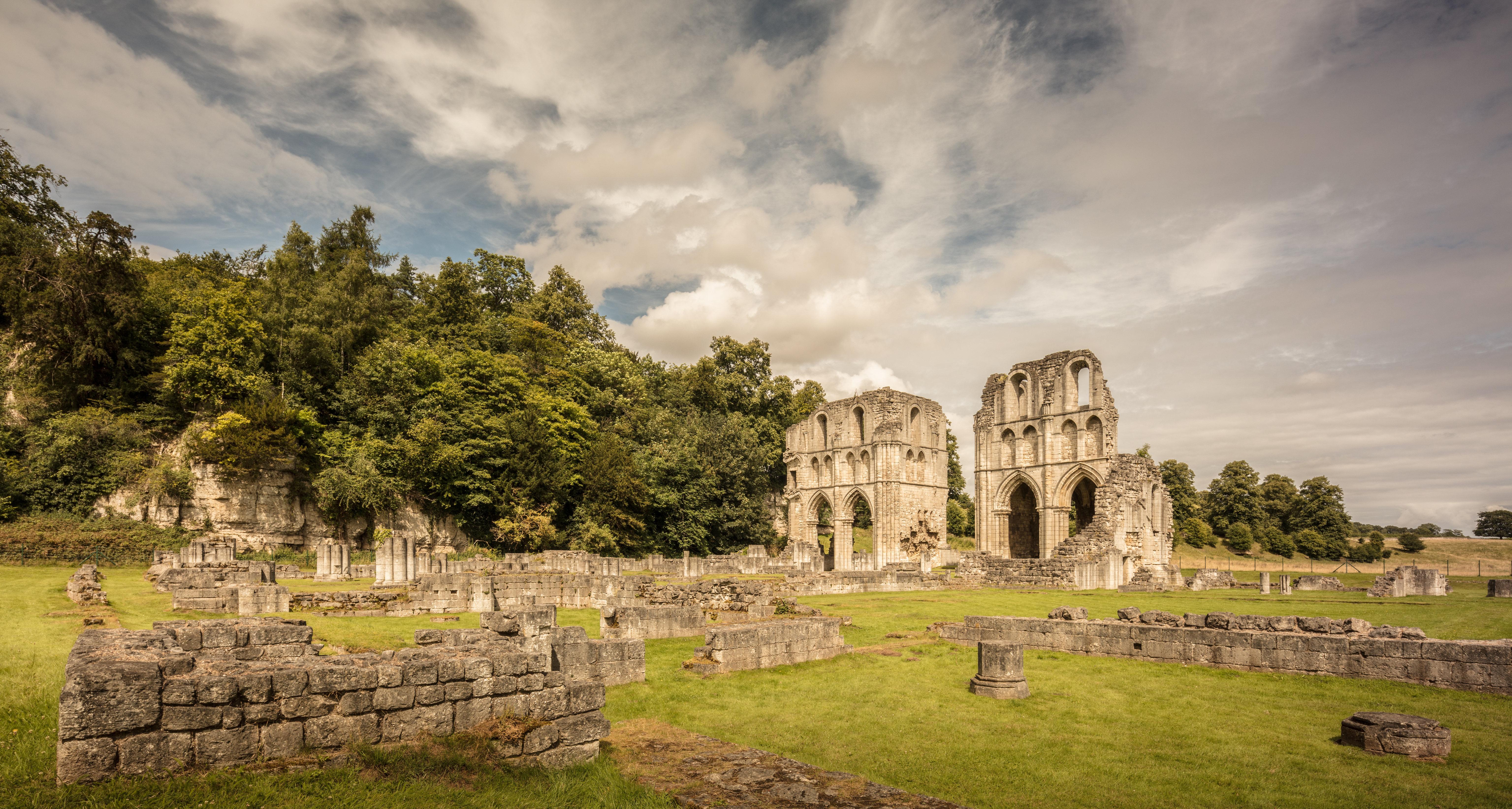Eglwys Crist
Yr Orsedd, Clwyd
Adeiladwyd yr eglwys gyntaf ar y safle hwn yn 1841, ond fe’i difrodwyd yn ddifrifol gan dân. Yn ôl yr hanes, ym mis Mai 1891, cynhaliodd y Ficer ‘briodas yn yr adfeilion’.

Beautifully set in a valley landscaped by Capability Brown in the 18th century, the most striking feature of this Cistercian abbey is the eastern end of its church, built in the new Gothic style c1170.
Maltby, Yorkshire
Founded in the 12th century as a monastry of the Cistercian order, Roche Abbey was once home to 50 monks and 100 lay brothers. Unlike other Cistercian monastries in Yorkshire, such as Rievaulx or Byland Abbey, Roche was modest in size which was more typical of the order.
England’s monasteries were suppressed by Henry VIII in the late 1530s, and Roche’s monks surrendered to the king’s commissioners on 23 June 1538. In a brief ceremony they handed over the keys, received pensions, and watched the clerks inventory the monastery’s possessions. Moveable items such as furniture were sold but what began as an orderly process degenerated into pillage. Local men carried away what they could. The process of destruction was vividly described by Michael Sherbrook, a clergyman at nearby Wickersley.
Despite this the soaring early Gothic transepts of this Cistercian monastery still survive to their original height and are ranked in importance with the finest early Gothic architecture in Britain.
After 200 years as ruins the 4th Earl of Scarbrough (1725–82) contracted England’s most famous landscape designer, Lancelot ‘Capability’ Brown, to bring order to the valley. Brown engineered a lake and islands, substituted a river for the medieval water channels, contrived a waterfall to cascade, and composed irregular tree groupings. He also levelled the ruins’ irregular walls to provide a grassed foreground for a banqueting lodge to entertain the Earl’s guests who were staying at his nearby Sandbeck Park estate.
In the 19th century later Earls of Scarbrough began undoing Brown’s work. They wanted the past exposed as a literal artefact, opened up for inspection and study. The process took more than 80 years, and was refocused and professionalised after the First World War, when the state took over care of the medieval remains. Now, the site giving the paradoxical impression of a monastic complex in the course of construction.
In the summer enjoy a picnic in the ruins by the stream and explore the remaining section of the gatehouse; the magnificent surviving transept walls; and the ruined hall of the lay brothers’ infirmary.
Yr Orsedd, Clwyd
Adeiladwyd yr eglwys gyntaf ar y safle hwn yn 1841, ond fe’i difrodwyd yn ddifrifol gan dân. Yn ôl yr hanes, ym mis Mai 1891, cynhaliodd y Ficer ‘briodas yn yr adfeilion’.
Penarlâg, Flintshire
Mae eglwys wedi’i chysegru i Sant Deiniol wedi sefyll ar y safle hwn ers y chweched ganrif. Mae’r gynulleidfa’n ymfalchïo yn y cysylltiad rhwng yr eglwys a theulu y Prif Weinidog Fictoraidd, William Ewart Gladstone.
Llantysilio, Denbighshire
Saif eglwys St Tysilio mewn Ardal Gadwraeth, yn edrych dros yr Afon Dyfrdwy, yn ymyl Dyfrbont Pontcysyllte, un o Safleoedd Treftadaeth y Byd. Wrth ymweld â’r lle, cewch eich ysgubo nôl tua phum can mlynedd.